Microsoft Surface Pro 11 review: Microsoft's cool convertible has found its moment
The Surface Pro has long had its design and usability in shape, but now it has the internal hardware to match – the result is a fantastic ultraportable PC
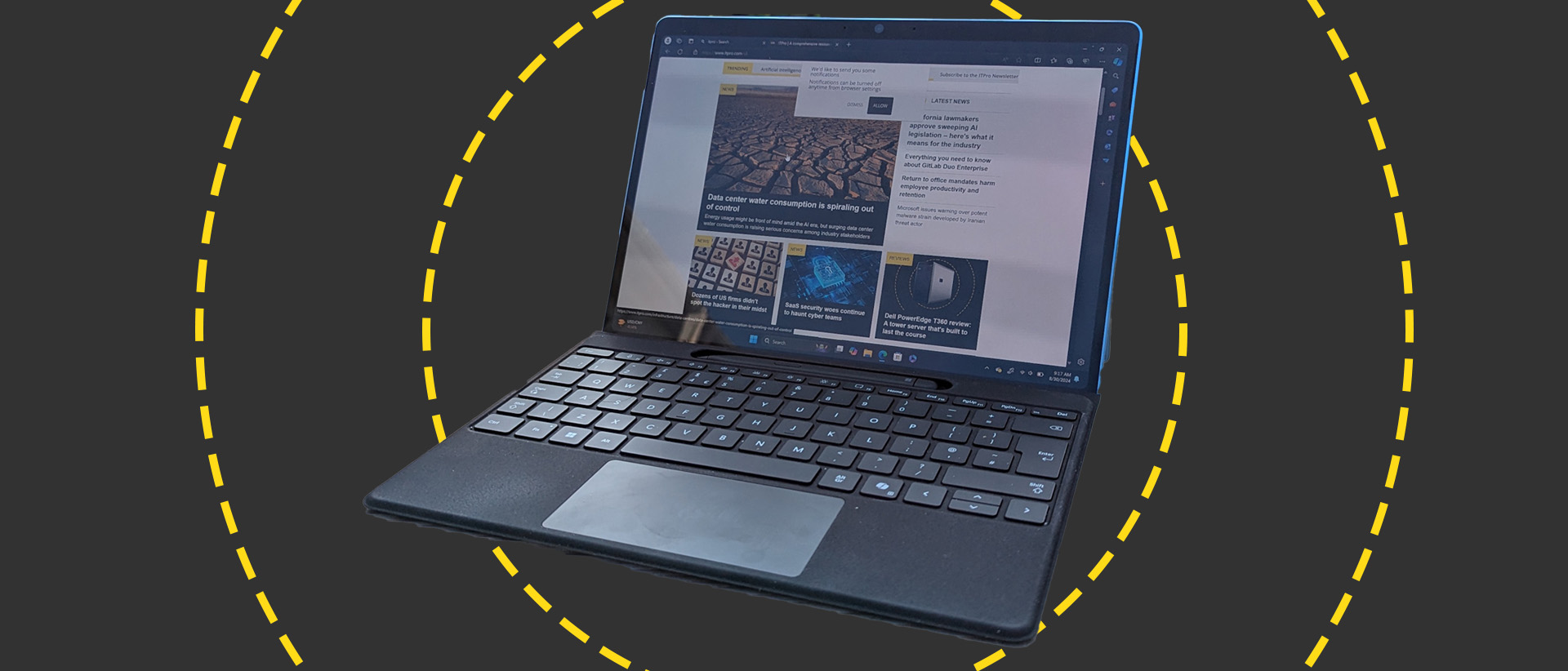
-
+
Superb flexible design
-
+
Incredible OLED screen
-
+
Best-in-class performance
-
+
Epic battery life
-
-
Very expensive in higher configurations
-
-
Need to budget extra for the keyboard

Editor's note: Microsoft's Surface Pro 11 couldn't have come at a better time for Snapdragon X fans; with the incompatibility issues down to few as possible and more and more Windows apps being made available, the Pro seems to have become the go-to tablet for businesses. What's more, there is arguably no other lightweight 2-in-1 convertible with a more steelier focus on AI. You could even argue that Microsoft's Copilot+ enhancements make more sense on Surface Pro than on any other device.
Original review: Microsoft's Surface Pro 11 is big signal to businesses that Qualcomm's tech is ready for them. And not just because there isn't an Intel version. The latest model of Surface Pro needs you to ditch x86 and give ARM64 a try, which is easier now that Microsoft has solved most of the incompatibility issues of old.
Microsoft Surface Pro 11: Design
There's nothing about the physical design that immediately screams revolution. The body of the tablet is near-identical to that of the Surface Pro 9, while the weight is a couple of grams heavier.
The kickstand flips out to hold the screen up in a wide range of positions, from almost flat to nearly vertical, or you can always just use it like a tablet if you wish. It also hides a small flap that conceals the SSD compartment, allowing you to easily switch out the supplied storage for another 30mm M.2 NVMe SSD.
As with any tablet-style convertible, there's limited physical connectivity. Here you get two USB 4 Type-C ports, Microsoft's SurfaceConnect Port and that's it. This means you'll need a dock if you want a desktop setup or to connect to an external display, but that's hardly new with the Surface Pro line. And with USB 4, Bluetooth 5.4, and Wi-Fi 7 onboard, at least what connectivity you have is reasonably future-proof.
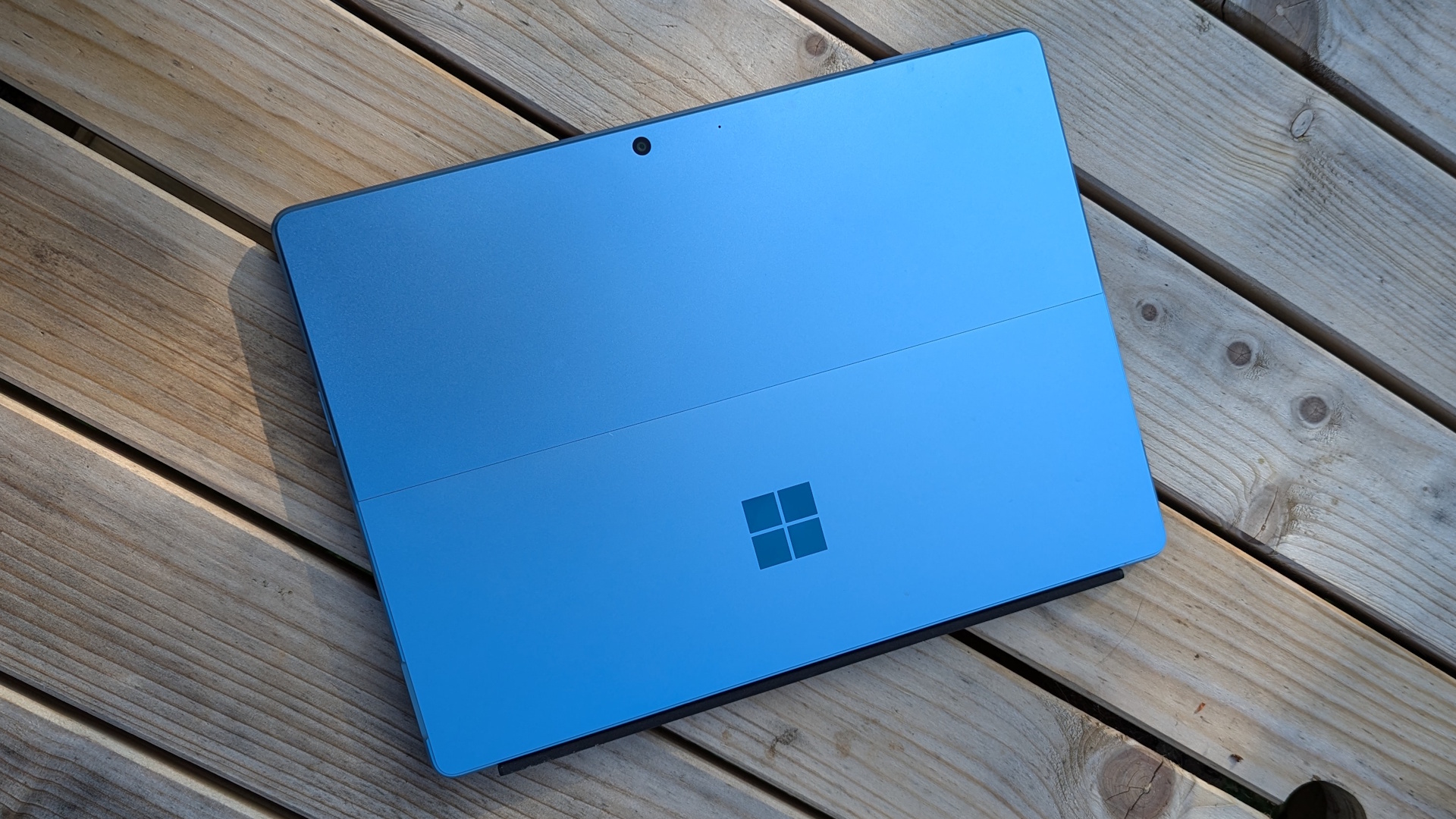
The Surface Pro 11's keyboard is compatible with the same Surface Pro signature keyboard as the Surface Pro 9, 8, and X, but also Microsoft's new Pro Flex keyboard. This one has a party trick, operating wirelessly from a distance as well as when physically connected through the magnetic lugs and strip. We had one with the Surface Pro 11 to test, and it's an excellent keyboard, making up for its relatively limited travel with a lovely fast and clicky feel.
Unlike most wireless keyboards for tablets, there's no need to charge it separately, either. It simply recharges while attached to the Surface Pro. And if the touchpad's on the small side, it's still very usable, even in apps that require some precision.
The keyboard also contains a hollow shape to house and charge Microsoft's Surface Pen, though we found it oddly tricky to get the flat-topped stylus out of its spot in a hurry. It's superb for notes, annotations, sketches, and doodles, and makes even more sense when using Copilot+ features like the Cocreator AI-enhanced drawing feature in the Paint app. Here you can squiggle out the basics of an illustration, and Copilot does its best to turn it into something vaguely artistic, or at least less risible, with the results growing more detailed and even photo-realistic as you push the Creativity slider to the right.
Sign up today and you will receive a free copy of our Future Focus 2025 report - the leading guidance on AI, cybersecurity and other IT challenges as per 700+ senior executives
Microsoft Surface Pro 11: Display
Entry-level versions of the Surface Pro 11 feature a very good 2880 x 1920 resolution Pixel Flow IPS display with a 120Hz dynamic refresh rate. Move up to the mid-range versions, though, and you'll get what we have here: a stunning 1920p OLED display, with a one-million:1 contrast ratio and the same 120Hz dynamic refresh rate.
As usual, the combination of the high resolution and square aspect ratio makes it a great screen for getting things done, even if Windows' split-screen view gives you two side-by-side windows that are a little too thin to fit all you'd like of a document in without scaling down. But the vivid colors, high brightness levels, and HDR support make it even better for creative work, not to mention entertainment if you're traveling or away from home.
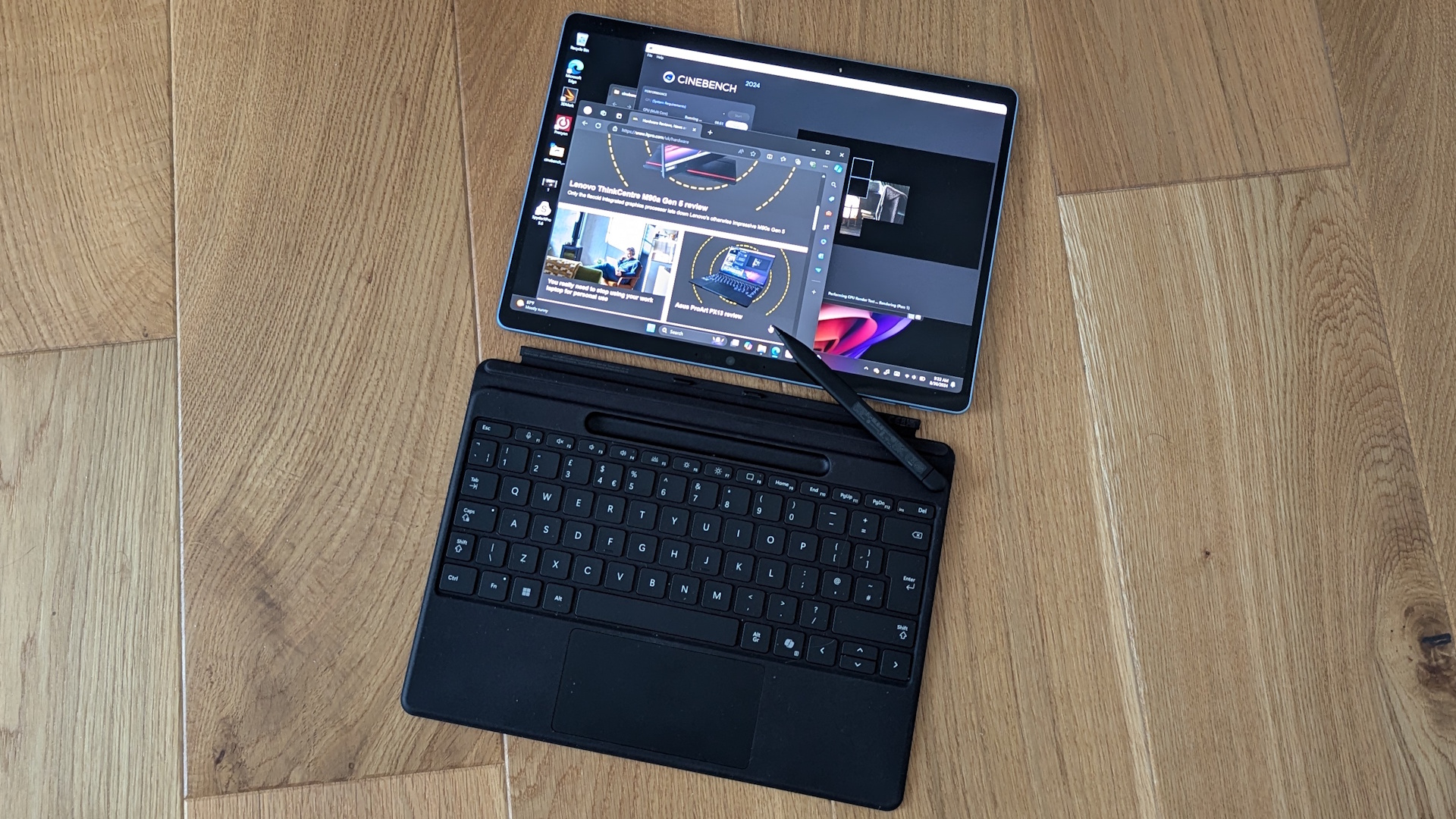
In tests, it's clear that this is the best screen Microsoft has so far put into a Surface device. It reaches brightness levels of 620.4cd/m2, has the perfect blacks and contrast we expect from OLED, and can display 99.9% of the sRGB gamut and 98.9% of DCI-P3. Color accuracy is so good with the display set to an sRGB profile that we recorded an average Delta E of just 0.78.
Audio doesn't let the sound down, either. The output from the speakers is almost supernaturally big and open given the slimness of the device. Meanwhile, put the sensitive microphones and 1440p webcam together with the new video and sound enhancements that come with Copilot+, and you have a great option for professional-looking and sounding video calls and meetings. It barely puts a foot wrong.
Microsoft Surface Pro 11: Performance
The real news with this Surface Pro, though, is performance. We've had time to test a few Qualcomm Snapdragon X laptops now, and each has impressed with its fantastic multi-core performance, which has given even Apple's M3 processors some competition. The Surface Pro 11 can't quite match the Asus Vivobook S15 on speed – we suspect due to power and thermal considerations – but it gets awfully close and sets new standards on what you can do for a tablet-style device.
The Snapdragon X1E80100/16GB configuration tested beats the Intel Core Ultra 7 based Asus Vivobook Pro 15 OLED on Geekbench 6 multi-core performance, with a score of 13134 to 12612, and comes close to the 13635 scored by the beefy Huawei MateBook X Pro. This also makes it significantly faster than the last-gen Intel Core i7 Surface Pro, which scored 1594 for single-core workloads and 6,090 for multi-core.
Meanwhile, its scores in the Cinebench 24 rendering benchmark – 104 for single-core and 802 for multi-core – put it roughly on a par with the HP Omnibook X, at 87 and 808, and not too far behind the Asus Zenbook S16 (112 and 877), with its new AMD Strix Point chip. There have always been performance compromises involved in using the Surface Pro rather than a conventional laptop, but they have never been as minor as they are now.
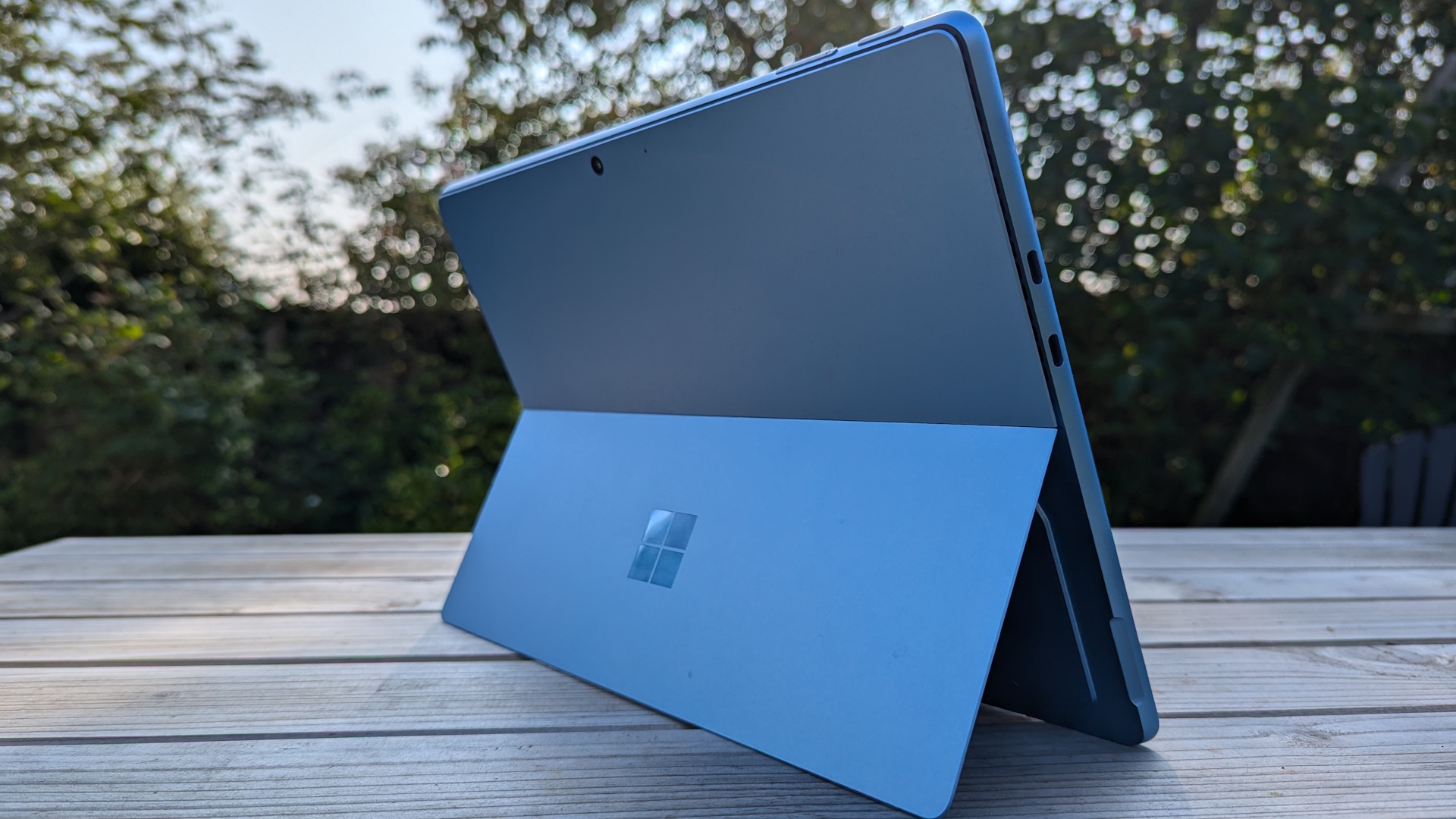
We're still evaluating AI benchmarks as new AI devices hit the market, but the Surface Pro 11's integrated NPU promised 45TOPs, making it one of the fastest around. GPUs are still more powerful in most scenarios, but these NPUs can handle local AI workloads while using much less power. Right now, most businesses won't find the AI features of Copilot+ PCs all that compelling, but more software is coming online, or incorporating GenAI features to speed-up workflows or add a little extra creativity to documents and presentations. The Surface Pro 11 will be well-equipped to support them.
What's more, the Surface Pro's battery life is better than it's ever been before. Looping video with the screen brightness set to 170cd/m2, the Surface Pro 11 kept running for 16 hours and 28 minutes before running out of puff. You'll easily have enough charge to work through the whole day, and you'll often have enough to make it through the next morning too. To put this in perspective, the old Surface Pro 9 ran dry in under nine hours.
Microsoft Surface Pro 11: Is it worth it?
Despite some misses, the Surface Pro has always had the makings of a great business device. More so than Apple's more creative-focused iPad Pro, the Surface Pro provides all the power of a laptop with the portability of a tablet, in a flexible 2-in-1 style.
Poor processing power and a lack of battery life have traditionally been the main sticking points with the Pro, but that has been largely rectified with the 11. The latest Surface Pro is faster than most mainstream laptops, and last significantly longer than previous models. Even going throughout a whole workday without needing a charge.
Sadly it isn't completely faultless; not every Windows application will run on ARM64 hardware (though that list is getting shorter). And the price is still extraordinarily high, almost one year after it was first released. The starting price is over $1,000 and that's before you add any bells and whistles... or even a stylus. That being said, this is the best Surface Pro to date.
Microsoft Surface Pro 11 specifications
Display | 13-inch 2,880 x 1,920 OLED, 120Hz refresh rate | Row 0 - Cell 2 | Row 0 - Cell 3 |
Processor | Qualcomm Snapdragon Elite XE80100, 12 cores at 3.4GHz | Row 1 - Cell 2 | Row 1 - Cell 3 |
GPU | Qualcomm Adreno X1-85 | Row 2 - Cell 2 | Row 2 - Cell 3 |
RAM | 16GB LPDDR5 | Row 3 - Cell 2 | Row 3 - Cell 3 |
Ports | 2x USB 4 Type-C, Surface Connect | Row 4 - Cell 2 | Row 4 - Cell 3 |
3.5mm audio jack | No | Row 5 - Cell 2 | Row 5 - Cell 3 |
Camera | 1440p webcam with IR/Windows Hello, 10MP rear-facing camera | Row 6 - Cell 2 | Row 6 - Cell 3 |
Storage | 51GB PCIe4 SSD | Row 7 - Cell 2 | Row 7 - Cell 3 |
Connectivity | Wi-Fi 7, Bluetooth v5.4 | Row 8 - Cell 2 | Row 8 - Cell 3 |
Weight | 895g | Row 9 - Cell 2 | Row 9 - Cell 3 |
Dimensions | 287 x 209 x 15.8 to 9.3mm (tablet only) | Row 10 - Cell 2 | Row 10 - Cell 3 |
Battery Capacity | 53Wh | Row 11 - Cell 2 | Row 11 - Cell 3 |
| Row 12 - Cell 0 | Row 12 - Cell 1 | Row 12 - Cell 2 | Row 12 - Cell 3 |
Stuart has been writing about technology for over 25 years, focusing on PC hardware, enterprise technology, education tech, cloud services and video games. Along the way he’s worked extensively with Windows, MacOS, Linux, Android and Chrome OS devices, and tested everything from laptops to laser printers, graphics cards to gaming headsets.
He’s then written about all this stuff – and more – for outlets, including PC Pro, IT Pro, Expert Reviews and The Sunday Times. He’s also written and edited books on Windows, video games and Scratch programming for younger coders. When he’s not fiddling with tech or playing games, you’ll find him working in the garden, walking, reading or watching films.
You can follow Stuart on Twitter at @SATAndrews.
-
 ‘1 engineer, 1 month, 1 million lines of code’: Microsoft wants to replace C and C++ code with Rust by 2030 – but a senior engineer insists the company has no plans on using AI to rewrite Windows source code
‘1 engineer, 1 month, 1 million lines of code’: Microsoft wants to replace C and C++ code with Rust by 2030 – but a senior engineer insists the company has no plans on using AI to rewrite Windows source codeNews Windows won’t be rewritten in Rust using AI, according to a senior Microsoft engineer, but the company still has bold plans for embracing the popular programming language
By Ross Kelly Published
-
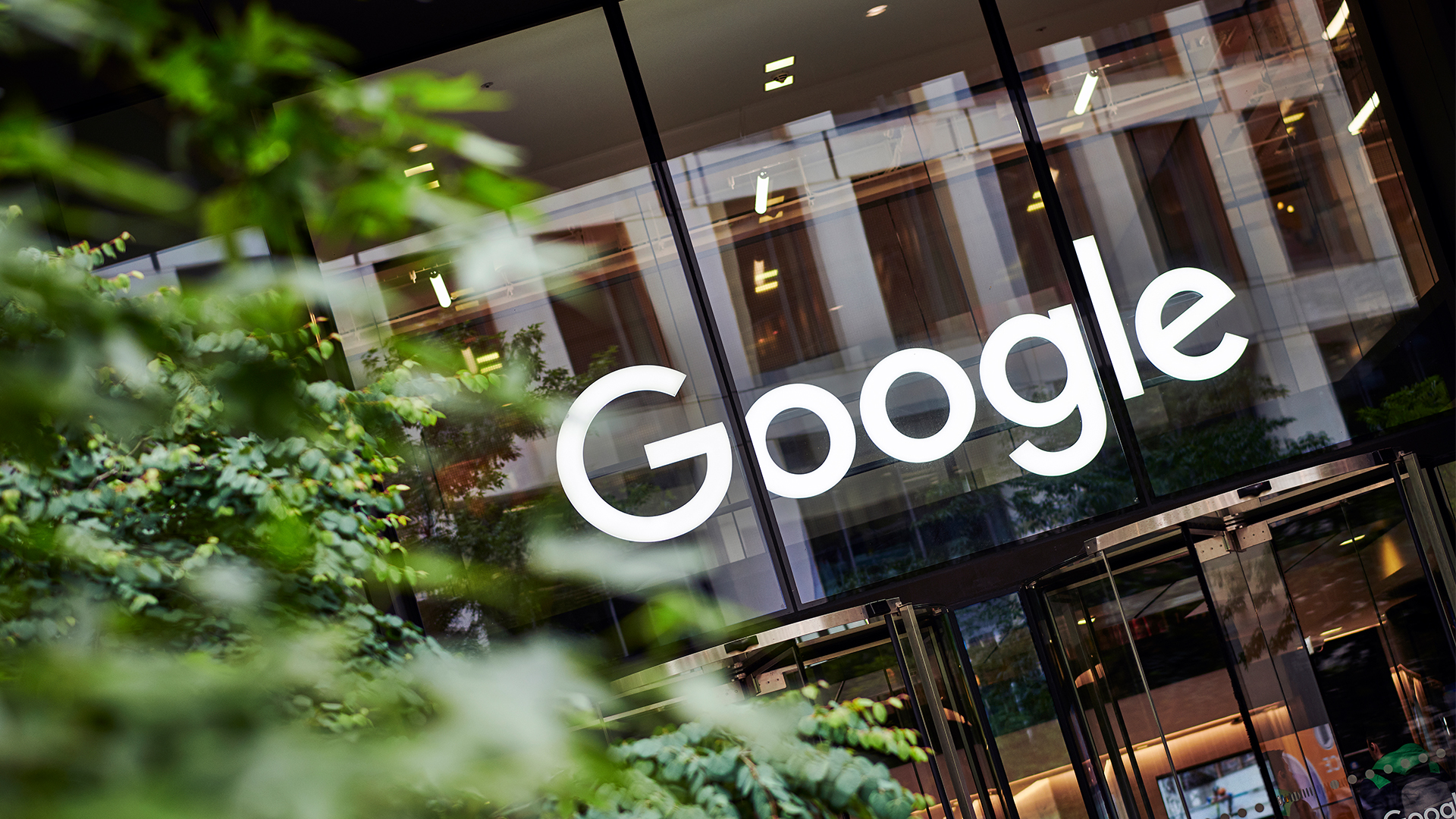 Google drops $4.75bn on data center and energy firm Intersect
Google drops $4.75bn on data center and energy firm IntersectNews The investment marks the latest move from Google to boost its infrastructure sustainability credentials
By Nicole Kobie Published
-
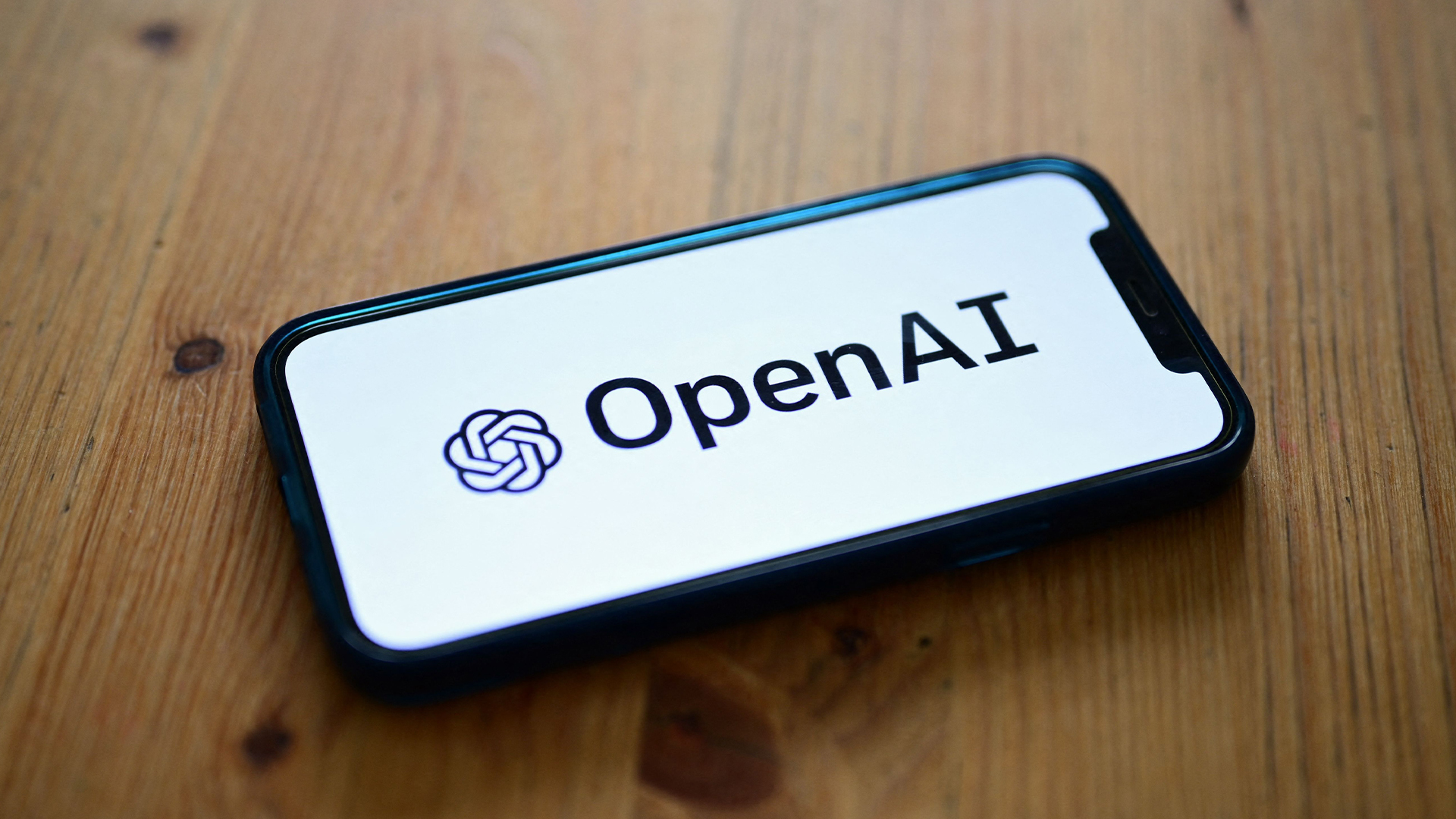 OpenAI says prompt injection attacks are a serious threat for AI browsers – and it’s a problem that’s ‘unlikely to ever be fully solved'
OpenAI says prompt injection attacks are a serious threat for AI browsers – and it’s a problem that’s ‘unlikely to ever be fully solved'News OpenAI details efforts to protect ChatGPT Atlas against prompt injection attacks
By Nicole Kobie Published
